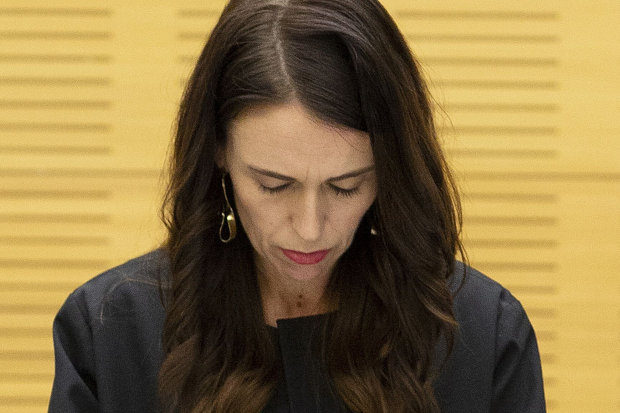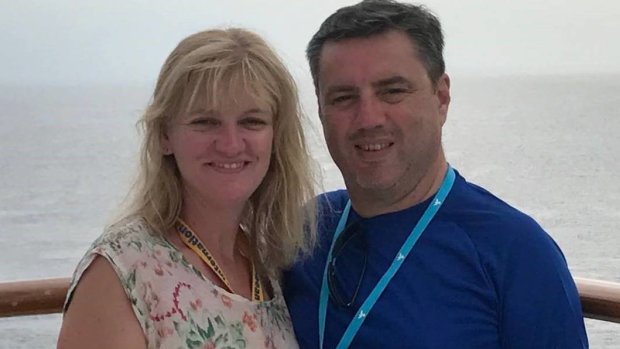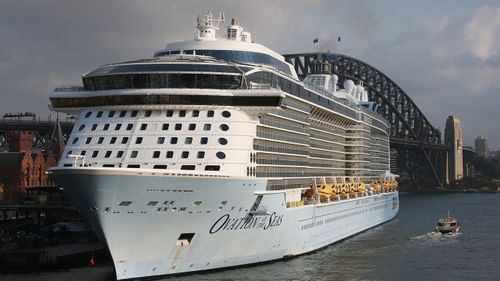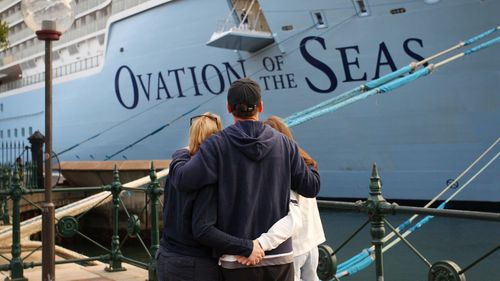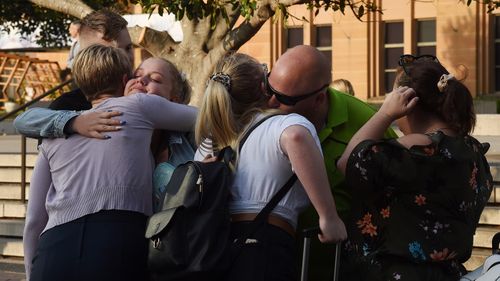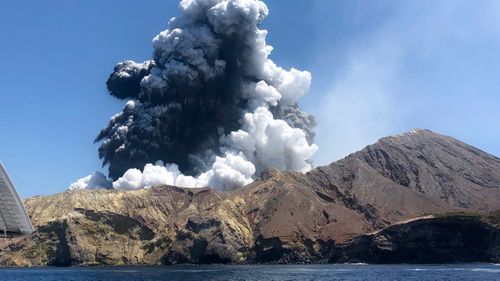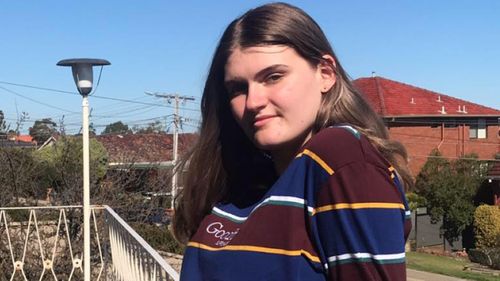
Explained: Why some Maori feel the NZ volcano disaster was a form of divine retribution
White Island is a jewel of Aotearoa — the Maori name for New Zealand — and the local Ngati Awa tribe consider Whakaari to be a living ancestor. In the Maori cognition, it is wrong for anyone to stomp on her sacred soil.
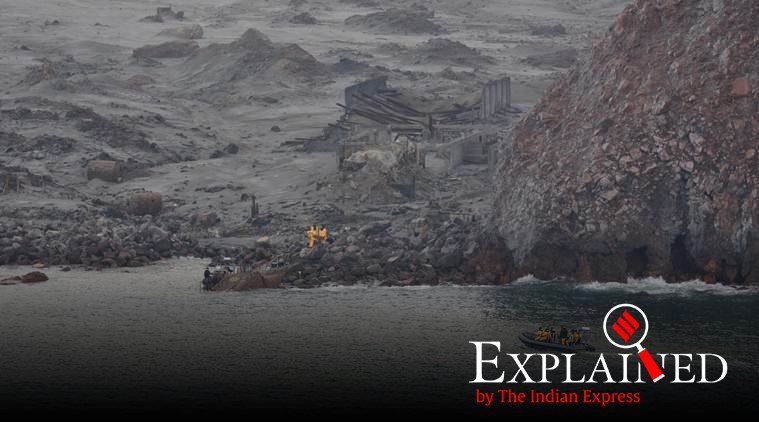
This photo released by the New Zealand Defence Force shows an operation to recover bodies from White Island after a volcanic eruption in Whakatane, New Zealand, Friday, December 13, 2019. (New Zealand Defence Force via AP)
As the toll in the New Zealand volcano disaster climbed to 16 with the death of an injured Australian man admitted to a Sydney hospital on Sunday (December 15), unease and divisions grew over the future of White Island, a tourism milch cow that is also an important part of the sacred heritage of the country’s original Maori inhabitants.
Reporters have descended from all over the world in the towns of Whakatane and Tauranga on New Zealand’s North Island — the two towns nearest to the island of Whakaari (White Island) in the Bay of Plenty.
Many have reported what the Maori have told them: that the local tribe of Ngati Awa consider Whakaari to be a living ancestor, and that it is wrong for anyone — local or tourist — to stomp on its sacred soil.
While New Zealand is a volcanic country, and scientists have recorded that Whakaari had been showing signs of volatility for several weeks leading up to the eruption that took place on December 9, several media reports have quoted the Maori as saying they had been living in fear of the ancestor’s rage at the relentless tourist tours to the island.
To these Maori, the eruption appears as a sign of Whakaari’s annoyance — “she”, as they refer to the volcano, had reached the end of her patience with people walking up and down her body, and decided to give them a taste of her anger.
Hinepare Tawa, 32, a resident of Whakatane, told ‘The Observer’ of the UK: “My belief is that Whakaari is a living being, an ancestor, and I don’t believe she is a person to be disturbed. If the island was closed I wouldn’t be too worried about it because I really have a problem with capitalising on nature.”
Even so, tourism is critical to the economy of towns like Whakatane, located in one of New Zealand’s poorer regions. The socio-economic deprivation of the region around the Bay of Plenty was depicted in New Zealand filmmaker Taika David Waititi’s 2010 blockbuster ‘Boy’.
The privately administered tours to the island of Whakaari, at NZ$250 (about Rs 11,700) and above, may be out of reach of most local people, but the tourism business supports a large number of livelihoods in the area.
Should the White Island tours be shut down as a consequence of the eruption — or if tourists were to stay away for fear of another tragedy — the local economy is likely to suffer.

Whakatane community unites after Whakaari eruption

White Island hugely popular as film set
Films such as Narnia, the Lord of the Rings and Mulan all used footage from Whakaari/White Island. ...
It's an eruption that has shaken an Eastern Bay of Plenty community to the core, leaving it with sadness, uncertainty and tension.
A numbing disbelief hangs like a pall across the tight-knit community. People are dead, two bodies remain unaccounted for. Others who visited the island are critical, others are serious.
Notes and drooping flowers are entwined in the wire fence on Muriwai Drive, for those who were affected by last Monday's eruption.
"Huia Whakaari has spoken..." a note reads, "although we are grieving lost souls, I believe she is too. The rivers of green translucent tears pouring from her into Tangaroa show us this."
The ABC has hastily withdrawn two promos for its upcoming travel show Griff's Great Kiwi Adventure in the wake of the volcanic eruption on White Island (also known as Whakaari). ...
READ MORE:
* Multiple casualties, multiple victims: Man who flew last survivor off Whakaari/White Island speaks
* Whakatāne tourism expected to suffer from Whakaari/White Island tragedy
* Whakaari/White Island eruption: How close do tourists get to the crater?
* Whakaari/White Island eruption: Owners say tragic event leaves them heartbroken
* 'You can't eliminate risk': NZ beefed up safety laws after tourist deaths
* Volcano explorer and film-maker Geoff Mackley questions why tour group was on Whakaari/White Island
* Police say no survivors are left on White Island after eruption in the Bay of Plenty
Whakaari is a powerful entity, a living presence whose vagarious moods inspire awe, but at the same time a deep reverence and respect.

LILLANI HOPKINS
Last Monday's eruption on Whakaari/ White Island in the Eastern Bay of Plenty
The island's odd coughs and splutters are normal for anyone who lives there, but this time it's different. There is an overwhelming sense of support and kindness yet helplessness among the town.
Among this unrest grows daily on what will happen next, people want answers, they want closure.

GEORGIA MAY GILBERTSON
Looking towards White Island's crater
"The tourism side is causing quite a bit of contention in the community. The focus has been firmly on recovering the bodies and treating those who are in hospital", Radio One Double X announcer Kathie Guy said.
"We've lived with this live volcano in our backyard forever. We know it's active. We're used to it. No one is thinking like that anymore - quite a shift in attitude.
"Most people are still in total disbelief. We've never had this kind of disaster before".
Event manager and resident Jo Finlay said locals "felt broken" by the eruption.

SUPPLIED
John Baker witnessed an electrical storm at Whakaari/White Island about 20 years ago
"Whakaari is such a big part of our town and our life, but now we've got this different feeling towards it. We're just so hurt and shell-shocked that something like this could happen," Finlay said.
"There's no fear towards the island, just hurt. I've been out there a couple of times, it's an eerie place. You feel like you're on the moon. Which is why it's such an experience for people."
Finlay believed there would be a divide on what would happen next in terms of visiting the island.
"I don't think anyone can think about the 'what next' until we deal with 'the now'.

GEORGIA MAY GILBERTSON
The crater at White Island
The eruption "hit very close to home" for former charter boat operator John Baker, who has witnessed the island's fury before.
"We've had stones dumped on us about five times and we've been under many ash clouds. This was normal for about 10 years when the island was really active. We'd wake up in the morning and the boats would be covered in two to three inches of ash.
"Once we were out diving and laying a memorial when the island erupted on us.

GEORGIA MAY GILBERTSON
Looking towards the crater at White Island
"I witnessed one of the biggest electrical storms you'd ever seen during an eruption about 20 years ago. We'd anchored up for the night and we heard this pumping sound and couldn't figure out where it was coming from. When we looked outside the boat the ash cloud was already a half-kilometre radius around White Island, but the cloud was still going up in the air."
"Then it all started falling, ash, gravel, scoria. We didn't even have time to haul the anchor, we broke it out and raced back to Whakatane.

ALEXANDER KAUFFMANN
Tourist Allessandro Kauffmann was on a boat leaving Whakaari/White Island when it erupted, and captured this on video.
"It was the most horrific lightening and thunderstorm I've ever seen in my whole life, it was all in the ash. It's the closest to hell I've ever been," he said.
Baker said stepping onto the island was always a risk.
"The bottom line is, it's an active volcano, it's unpredictable and it's all chance whether you get caught on there or not."
Baker said the distance from the jetty to the crater was about 500 metres with strict instructions to stick to the path at all times.

ANDY JACKSON/STUFF
Local pastor Grant Bateson from Liberty Life church.
Whakaari is also a "sacred site" as the 10 bodies of miners who died in a lahar in 1914 were never found, the only living survivor was the camp cat, Peter the Great.
Throughout the years Baker has also laid several memorials on the island through requests of families.
"One of my mates died a while back and the family requested that I took his ashes out there. We climbed up as high as we could and put them in a little crevice that overlooks the crater.
"I think this will divide the community to a certain extent (on whether tours should go ahead in the future), but time dulls things. People forgot what happened on the Island in 1914 and then there was the DOC worker who was killed on Raol Island as well. I don't know where this will end up."

ANDY JACKSON/STUFF
Flowers are placed near Muriwai Drive which remains cordoned off since Monday's eruption
Baker said he'd told previous operators to take people around the island on a boat, rather than set foot on it.
"It's the excitement and thrill that draws the people."
Senior pastor at Liberty Life Church Grant Bateson said the community was there to "serve and to help".
"People are so wanting to help. Typical Whakatane, typical New Zealand. It's still surreal, it's still very 'just happened'. It's hard to know what the town's like. It's a real unknown at this point, 18,000 people come in on these boats, so what's going to happen in the future is anyone's guess."
Bateson said he didn't believe the latest eruption would divide the community on whether tours would continue.
"People have been going to that volcano for years, knowing it's active. They go there for that reason, whether it's the risk or the adventure.
"I think when you get tragedy, when you get adversity, they offer opportunities for communities to really band together, rather than division."
Whakaari/White Island: All Australian burns victims repatriated
Many of the severely injured people from Whakaari White Island remain in burns units around New Zealand and will face months of treatment. ...
Wellington





